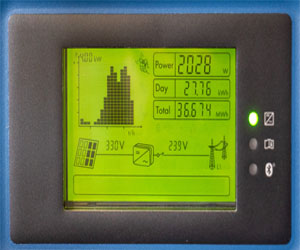


A Path To Sustainability And Well-Being

In an increasingly interconnected and technologically advanced world, the concept of harmony with nature has gained renewed importance. This idea is rooted in the belief that humanity can live in balance with the natural world, respecting its rhythms and ecosystems. It signifies a commitment to coexistence and sustainability, recognizing that the health and well-being of the planet are intimately tied to our own.
Harmony with nature is not merely an abstract ideal; it is a practical and philosophical approach to life that has profound implications for our environment, mental well-being, and the future of our planet.
At its core, harmony with nature emphasizes the interconnectedness of all living things. It acknowledges that humans are not separate from the environment but an integral part of it. When we live in harmony with nature, we treat the Earth and its resources with respect, realizing that our actions have consequences not only for the planet but for future generations.
One of the fundamental principles of harmonious living is sustainability. This means using resources responsibly, minimizing waste, and conserving energy. Sustainable practices include reducing, reusing, and recycling, and making choices that have a lesser impact on the environment. By embracing sustainability, we reduce pollution, conserve biodiversity, and decrease our carbon footprint.
Harmony with nature also fosters a deep appreciation for the natural world. People who live in harmony with nature often spend more time outdoors, cultivating a sense of wonder and gratitude for the Earth's beauty. This connection to nature has been linked to improved mental and emotional well-being, reducing stress and promoting a sense of calm and contentment.
Practicing harmony with nature can be a personal endeavor, but it can also extend to broader social and cultural movements. It inspires environmental activism, conservation efforts, and the development of eco-friendly technologies. Communities that share a commitment to harmony with nature may come together to protect and restore ecosystems, promote sustainable agriculture, and reduce their collective environmental impact.
One of the most compelling arguments for harmony with nature is the urgency of addressing environmental challenges. Climate change, deforestation, pollution, and loss of biodiversity are global issues that demand collective action. Embracing harmony with nature provides a blueprint for sustainable solutions and a more hopeful future. By working in unison with the environment, we can mitigate the damage we've inflicted and strive to heal the Earth.
Harmony with nature is not an abstract concept but a practical and ethical way of living. It offers a path toward sustainability, well-being, and environmental stewardship. It is a reminder that we are not separate from the planet but an integral part of it, and our actions have a profound impact on the world around us. By embracing harmony with nature, we can create a more sustainable and interconnected world, benefiting both the environment and our own quality of life.
Creative Landscaping Ideas
 2. Xeriscaping: For areas with limited water resources, xeriscaping is the way to go. This landscaping approach focuses on drought-tolerant plants, efficient irrigation systems, and mulching to conserve water. The result is a low-maintenance garden that thrives in arid conditions.
2. Xeriscaping: For areas with limited water resources, xeriscaping is the way to go. This landscaping approach focuses on drought-tolerant plants, efficient irrigation systems, and mulching to conserve water. The result is a low-maintenance garden that thrives in arid conditions.
3. Edible Landscaping: Why not turn your outdoor space into a source of fresh produce? Edible landscaping incorporates fruits, vegetables, and herbs into your garden design. Raised beds, vertical gardens, and fruit trees can create a beautiful and functional space that provides your family with fresh, homegrown produce.
4. Zen Gardens: Zen gardens are known for their minimalist and tranquil designs. These peaceful spaces often feature sand or gravel raked into patterns, along with carefully placed rocks and a few select plants. They provide a sense of serenity and are perfect for meditation or relaxation.
5. Cottage Gardens: Cottage gardens are characterized by their informal, abundant, and colorful arrangements. They typically include a mix of flowers, shrubs, and even some vegetables. The key is to create a slightly wild and romantic atmosphere, perfect for a more rustic and charming look.
6. Rock Gardens: If you have rocky or hilly terrain, consider creating a rock garden. These gardens use the natural features of the land, incorporating rocks, pebbles, and alpine plants. They provide a unique and visually appealing landscape.
A Guide To Harnessing The Sun's Energy
 Sunlight Capture: Solar panels, typically mounted on rooftops, capture sunlight using photovoltaic cells. These cells are made of semiconductor materials, usually silicon.
Sunlight Capture: Solar panels, typically mounted on rooftops, capture sunlight using photovoltaic cells. These cells are made of semiconductor materials, usually silicon.
Electricity Generation: When sunlight hits the cells, it excites electrons in the semiconductor material, causing them to move and generate an electric current. This current is direct current (DC).
Inverter Conversion: Most of our electrical devices and appliances operate on alternating current (AC). To make the electricity compatible, an inverter is used to convert the DC into AC.
Energy Use Or Storage: The converted electricity can either be used immediately in your home or stored in batteries for later use, ensuring a constant supply of power even when the sun isn't shining.
Advantages Of Solar Power For Beginners
Environmental Benefits: Solar power is a clean and renewable energy source. It produces no greenhouse gas emissions, reducing your carbon footprint and contributing to a healthier planet.
Lower Energy Bills: By generating your electricity, you'll rely less on traditional utility providers, leading to significant savings on your energy bills.
Energy Independence: Solar panels provide a degree of energy independence. You're less vulnerable to power outages and price fluctuations from utility companies.
Revolutionizing Cleaning For A Sustainable Future
 3. Eco-Friendly Packaging
3. Eco-Friendly Packaging
Green cleaning isn't limited to the contents of the cleaning products but also extends to the packaging. Innovations in packaging include the use of recycled and biodegradable materials, as well as more efficient and space-saving packaging to reduce transportation costs and emissions.
4. Smart Cleaning Appliances
Smart cleaning appliances equipped with sensors and AI technology are making cleaning more efficient and eco-friendly. These devices can optimize cleaning routines, minimizing resource waste by adjusting water usage, detergents, and energy consumption based on the specific cleaning needs. For example, robotic vacuum cleaners can map out your home and clean only the areas that need attention, saving both time and energy.
5. Waterless Cleaning Technologies
Waterless cleaning innovations are revolutionizing the way we think about cleaning tasks that traditionally require large amounts of water. Dry steam cleaning, for example, uses superheated steam to clean and sanitize surfaces without the need for chemicals or excessive water usage. These methods are not only more environmentally friendly but also more efficient.
6. Sustainable Cleaning Pads
Innovative cleaning pads made from sustainable materials like bamboo or recycled fibers are not only effective at capturing dirt and dust but are also biodegradable. They offer a green alternative to disposable cleaning pads that contribute to waste and pollution.
7. Chemical-Free Electrolyzed Water Cleaners
Some cleaning appliances now generate electrolyzed water on the spot by passing an electric current through a mixture of water and salt. This creates a powerful, non-toxic cleaning solution that effectively sanitizes surfaces, eliminating the need for chemical cleaning agents.
Benefits Of Green Cleaning Innovations
Improved Indoor Air Quality: Green cleaning innovations typically reduce the release of volatile organic compounds (VOCs) and harmful chemicals, leading to better indoor air quality and improved respiratory health.
Building A Sustainable Future
 The core principle of eco-friendly homes is to minimize the negative impact on the environment while maximizing the use of renewable and sustainable resources. Here are some key elements of eco-friendly homes:
The core principle of eco-friendly homes is to minimize the negative impact on the environment while maximizing the use of renewable and sustainable resources. Here are some key elements of eco-friendly homes:
Energy Efficiency: Eco-friendly homes are designed to be highly energy-efficient. They often feature better insulation, energy-efficient windows and doors, and advanced heating and cooling systems. These features reduce energy consumption and lower utility bills.
Renewable Energy: Many eco-friendly homes incorporate renewable energy sources such as solar panels and wind turbines. These technologies harness clean, sustainable energy from the sun and wind, reducing dependence on fossil fuels.
Water Conservation: Sustainable homes often feature water-saving appliances and fixtures. Rainwater harvesting and greywater recycling systems are also utilized to reduce water consumption, which is especially important in regions facing water scarcity.
Use Of Sustainable Materials: The construction of eco-friendly homes emphasizes the use of sustainable and recyclable building materials. This includes materials like bamboo, reclaimed wood, recycled glass, and low-VOC (volatile organic compound) paints to improve indoor air quality.
Passive Design: Passive design principles make use of natural elements like sunlight, wind, and shade to control the temperature and lighting within a home. This reduces the need for artificial heating, cooling, and lighting.
Green Roofs And Walls: Eco-friendly homes may incorporate green roofs and walls with vegetation that improves insulation, air quality, and aesthetics. Green spaces on rooftops and walls contribute to reduced urban heat islands and improved biodiversity.
Waste Reduction: These homes prioritize waste reduction through practices like on-site composting and recycling.
 Growing your own food is not just a trend; it's a way of life that offers a plethora of benefits for individuals, communities, and the planet.
Growing your own food is not just a trend; it's a way of life that offers a plethora of benefits for individuals, communities, and the planet.
The Resurgence Of Home Gardening
In recent years, there has been a significant resurgence in home gardening. People from all walks of life are rediscovering the joy and satisfaction that comes with nurturing a garden and producing their food. Whether you have a sprawling backyard or just a tiny balcony, there's a way to grow something that will grace your table with fresh, homegrown flavors.
The Joys Of Growing Your Own Food
One of the most immediate and rewarding aspects of growing your own food is the connection you establish with the earth. As you till the soil, plant seeds, and watch your crops grow, you become part of the natural world's cycles. The joy of seeing a tiny seed sprout into a thriving plant and, eventually, bearing fruits or vegetables is a deeply gratifying experience. It's a tangible connection to the earth's rhythms.
Nutrition And Health Benefits
Homegrown produce is not only delicious but also healthier. You have control over what goes into your garden, which means you can choose to grow organic, pesticide-free food. This translates into fresh, nutrient-rich produce that you can pick at the peak of ripeness, ensuring the highest levels of vitamins and minerals. Additionally, the physical activity and fresh air involved in gardening contribute to a healthier lifestyle.
Environmental Impact
Growing your own food is a sustainable and environmentally friendly practice. It reduces the carbon footprint associated with the transportation and packaging of commercially grown produce. Home gardens can also serve as biodiversity hubs, attracting pollinators and beneficial insects, contributing to the health of local ecosystems.